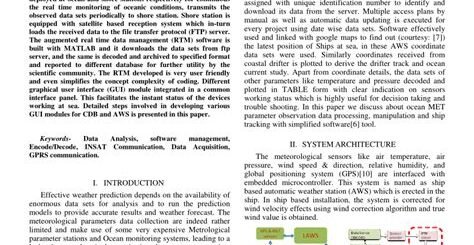Image Processing in Matlab: Edge Detection
In the field of image processing, Matlab has become an essential tool for professionals and researchers alike. One of the fundamental aspects of image processing is edge detection, a technique used to identify boundaries within an image. In this blog post, we will explore the concept of image processing in Matlab, specifically focusing on the importance of edge detection. We will delve into the significance of identifying edges in an image and how it contributes to various applications in fields such as medical imaging, robotics, and computer vision. Additionally, we will discuss two prominent edge detection techniques in Matlab – the Sobel Operator and the Canny Edge Detection method, and compare their effectiveness in identifying edges within an image. By the end of this post, you will have a better understanding of image processing in Matlab and the different approaches to edge detection, providing you with valuable insights for your own image processing projects.
Understanding Image Processing in Matlab
Image processing in Matlab is a complex but powerful tool for analyzing and manipulating visual data. With the use of algorithms and mathematical techniques, Matlab can be used to perform tasks such as image enhancement, image segmentation, and object detection.
One of the key components of image processing in Matlab is edge detection, which involves identifying the boundaries of objects within an image. This process is essential for various applications, including medical imaging, autonomous vehicles, and quality control in manufacturing.
Matlab offers a range of edge detection techniques, including the Sobel operator and the Canny edge detection method. Each technique has its own strengths and weaknesses, and understanding how to choose the right one for a specific application is crucial for successful image processing.
Furthermore, by comparing different edge detection algorithms in Matlab, users can gain a deeper understanding of their capabilities and limitations. This knowledge is invaluable for anyone working in fields that rely on image processing, as it allows for informed decision-making and optimization of image analysis tasks.
The Importance of Edge Detection
Edge detection is a crucial process in image processing, as it helps in identifying the boundaries within an image. These boundaries represent significant changes in intensity, and can be crucial in object recognition and feature extraction. Without accurate edge detection, the subsequent image processing tasks such as object recognition or image segmentation will be challenging and less effective.
One of the key reasons for the importance of edge detection is its role in enhancing image quality. By identifying edges, the details and features within an image can be better preserved and highlighted, leading to improved visual representation. Whether it’s in medical imaging, surveillance, or any other field, accurate edge detection is essential for obtaining clear and meaningful images.
In addition, edge detection plays a vital role in computer vision, where the identification of edges and contours is used for object detection and recognition. It provides the foundation for higher-level processing tasks, enabling the extraction of valuable information from digital images. Without reliable edge detection methods, the accuracy and efficiency of computer vision systems would be significantly compromised.
Moreover, edge detection techniques contribute to the reduction of data to be processed in subsequent image analysis. By focusing on the edges and important features, unnecessary information can be discarded, leading to faster and more efficient processing of images. This is especially important in applications where real-time processing or large volumes of images are involved.
Sobel Operator: An Effective Edge Detection Technique
When it comes to edge detection in image processing, the Sobel Operator is a technique that stands out for its effectiveness. This operator is widely used for detecting edges in images, and it does so by computing the gradient magnitude of the image intensity at each pixel. The Sobel Operator is particularly useful for detecting edges in images with low contrast, and it is also less sensitive to noise compared to other edge detection techniques.
One of the key features of the Sobel Operator is its ability to perform convolution on the image with two 3×3 kernels – one for detecting changes in the horizontal direction, and the other for changes in the vertical direction. By combining the results from these two convolutions, the operator is able to identify and highlight the edges in the image, thereby making them more prominent and easier to analyze.
Another advantage of the Sobel Operator is its computational efficiency. The use of 3×3 convolution kernels allows for faster processing of images, making it an attractive choice for real-time applications. This makes it suitable for various applications such as object recognition, medical image analysis, and video processing, where the speed of edge detection is crucial.
In conclusion, the Sobel Operator is a highly effective edge detection technique in Matlab that offers several advantages such as noise resistance, computational efficiency, and accuracy in detecting edges. This makes it a popular choice for various image processing applications, and it continues to be a valuable tool for researchers and practitioners in the field.
Canny Edge Detection: A Popular Approach in Matlab
When it comes to image processing in Matlab, the Canny edge detection algorithm is considered to be a popular and effective approach. This algorithm is widely used for detecting a wide range of edges in images, making it a valuable tool for researchers and developers alike.
The Canny edge detection technique is known for its ability to accurately identify the edges of objects within an image, while also minimizing the effects of noise. This makes it an ideal choice for applications such as object recognition, autonomous vehicle navigation, medical image analysis, and more.
One of the key factors that sets the Canny edge detection algorithm apart from other techniques is its multi-stage process. This process involves smoothing the image with a Gaussian filter, calculating the gradient magnitude and orientation, non-maximum suppression, and hysteresis thresholding.
Another important aspect of the Canny edge detection algorithm is its ability to automatically determine the thresholds for edge detection, making it a versatile and user-friendly approach for researchers and developers working with images in Matlab.
Comparing Different Edge Detection Algorithms in Matlab
When it comes to image processing in Matlab, edge detection is an essential step in analyzing and interpreting digital images. There are several edge detection algorithms available in Matlab, each with its own advantages and limitations. In this blog post, we will compare different edge detection algorithms in Matlab to help you understand their performance and choose the best one for your image processing needs.
One of the most widely used edge detection techniques is the Sobel operator. This method is based on computing the gradient magnitude of an image, using convolution with separate masks for horizontal and vertical edges. The Sobel operator is known for its simplicity and computational efficiency, making it a popular choice for many image processing applications.
Another popular edge detection approach in Matlab is the Canny edge detection algorithm. This method is known for its ability to accurately detect edges while minimizing the effect of noise. The Canny edge detection algorithm uses a multi-stage process that includes Gaussian smoothing, gradient calculation, non-maximum suppression, and edge tracking by hysteresis. As a result, it is often considered one of the most effective edge detection techniques available.
There are also other edge detection algorithms in Matlab, such as the Prewitt operator, Roberts cross operator, and Laplacian of Gaussian (LoG) method. Each of these algorithms has its own strengths and weaknesses, and the choice of which one to use depends on the specific requirements of the image processing task at hand.


